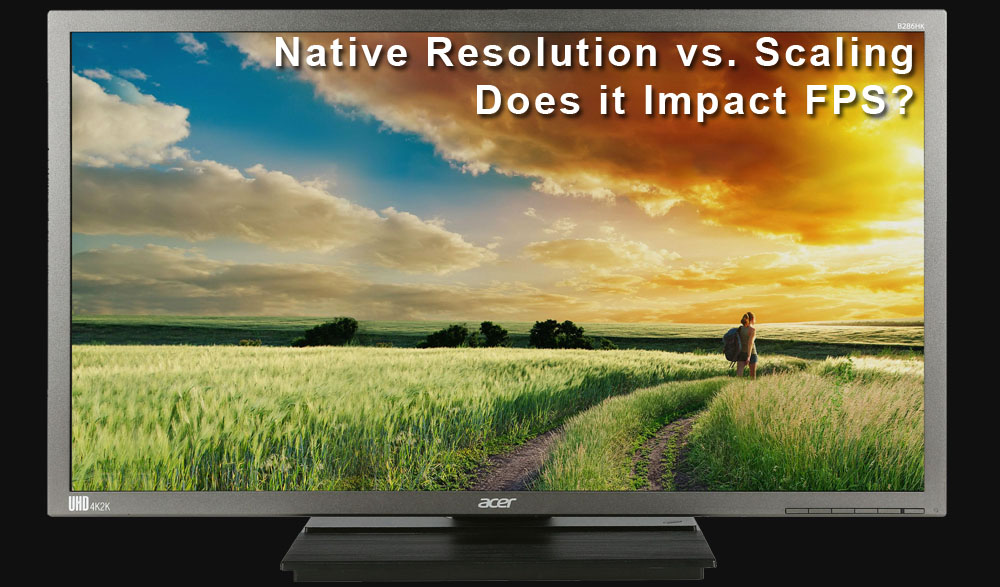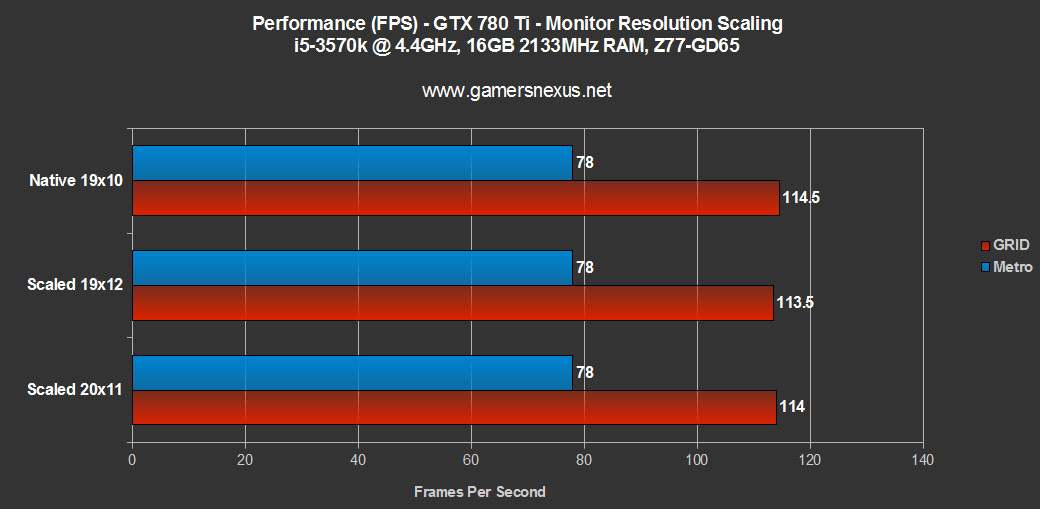This test was spawned out of a general lack of equipment in the GN lab. We've got a few monitors available for testing, but of the three best units (120Hz displays), only one natively operates at 1920x1080; the others -- fabled unicorns among monitors -- run at 2048x1152 and 1920x1200.
The 1920x1080 120Hz display isn't always available for our game GPU benchmarks, making it desirable to use one of the larger displays at a lower-than-native resolution (for consistent / comparable testing). In effort of honest benchmarking, we decided to double-check an existing suspicion that forcing lower-than-native resolutions would not negatively impact FPS or produce synthetic artifacts that do not exist at native resolutions.
The hypothesis says "nope, should be identical performance other than visual scaling." Let's see if running a monitor at a non-native resolution will negatively impact testing with artifacts or lower FPS.
Test Methodology
Each test was conducted three times for parity. We ran these tests using only two games: Metro: Last Light and GRID: Autosport. All tests were conducted on three monitors -- a 1920x1080 unit (native), 2048x1152 unit running at 1920x1080 (non-native), and 1920x1200 unit running at 1920x1080 (non-native). Reason would tell us that the results should effectively be the same other than the user experience, which will be slightly skewed / stretched.
NVidia 340.52 beta drivers were used for all tests conducted on nVidia's GPUs.
| GN Test Bench 2013 | Name | Courtesy Of | Cost |
| Video Card | (This is what we're testing). | NVIDIA. | Ranges |
| CPU | Intel i5-3570k CPU Intel i7-4770K CPU (alternative bench). | GamersNexus CyberPower | ~$220 |
| Memory | 16GB Kingston HyperX Genesis 10th Anniv. @ 2400MHz | Kingston Tech. | ~$117 |
| Motherboard | MSI Z77A-GD65 OC Board | GamersNexus | ~$160 |
| Power Supply | NZXT HALE90 V2 | NZXT | Pending |
| SSD | Kingston 240GB HyperX 3K SSD | Kingston Tech. | ~$205 |
| Optical Drive | ASUS Optical Drive | GamersNexus | ~$20 |
| Case | Phantom 820 | NZXT | ~$130 |
| CPU Cooler | Thermaltake Frio Advanced | Thermaltake | ~$65 |
The system was kept in a constant thermal environment (21C - 22C at all times) while under test. 4x4GB memory modules were kept overclocked at 2133MHz. All case fans were set to 100% speed and automated fan control settings were disabled for purposes of test consistency and thermal stability.
A 120Hz display was connected for purposes of ensuring frame throttles were a non-issue. V-Sync was completely disabled for this test.
Results
Pretty straight-forward stuff, really:
As you can see, all differences are within margin of test error. As we hypothesized, and as you likely already suspected, running displays at a resolution lower than native will not have an impact on performance. How often this happens in the real-world, outside of a lab environment, I'm really not sure -- but now we know the answer and can confidently test on all our displays at GN.
We conduct tests like this all the time just to ensure proper testing methodology, but don't always publish the results. This one seemed easy enough to publish. If nothing else, it shows we're serious about ensuring accurate data. We've learned to never strictly trust reason and knowledge without running practical tests first -- skewed results can cost days of work if a flaw is discovered in methodology at a later time.
- Steve "Lelldorianx" Burke.

